Dolomites Rifugio Guide: Mountain Huts, Booking, & Packing Tips for 2025
Dreaming of waking up to mountain views and a fresh Italian breakfast at 2,000 meters? Same. Everyday I look back on my time at the mountain huts of the Dolomites fondly, literally waiting for the hiking season to open up again.
I loved my time treking hut to hut through the dolomites and now I want to prep YOU for what you can expect staying at a Rifugio in the Dolomites!
Rifugio are the cozy, no-frills mountain huts scattered across the Dolomites.
Whether you’re tackling the Alta Via 1 or simply hiking from one scenic trail to the next, staying in a rifugio is one of the most memorable parts of a Dolomites adventure.
In this guide, I’ll walk you through what to expect, how to book, and what to pack—plus share some personal tips from my hut-to-hut hikes in northern Italy.

Affiliate Disclosure
**My posts usually contain affiliate links. However, all experiences mentioned on this page were paid out of pocket by me. If you make a purchase through a any of my links elsewhere, I may earn a commission at no additional cost to you. I only recommend products and services that I personally use and believe will add value to my readers. Thank you for supporting my blog!**
What Is a Rifugio?
A rifugio (plural: rifugi) is a mountain hut that offers basic but comfortable accommodations for hikers in the Alps.
Unlike wild camping, rifugi provide a roof over your head, a warm meal, and a chance to connect with other hikers. Most are family-run and deeply embedded in local mountain culture, offering a blend of rustic charm and practical amenities. I loved how each one I went to had its own identity. Always different from the next one.
However there are some key features that never change
Key features:
- Bunk-style or private rooms
- Communal dining
- Half-board (dinner + breakfast)
- Access only by foot or cable car
Some rifugi even have spectacular terraces, Wi-Fi, and bar service—all in a mountain setting. It’s what I like to call Dolomiti luxury!
There are over 400 rifugi scattered throughout the Dolomites, ranging from rustic, no-frills shelters to more modern huts with cozy comforts (WHOOHOO! 8 down 392 to go!)
Many date back to the early 20th century and were built by local alpine clubs or military forces.
These huts have long served as vital resting points for climbers, shepherds, and soldiers during World War I, especially along routes like the Alta Via 1 and Strada delle 52 Gallerie.
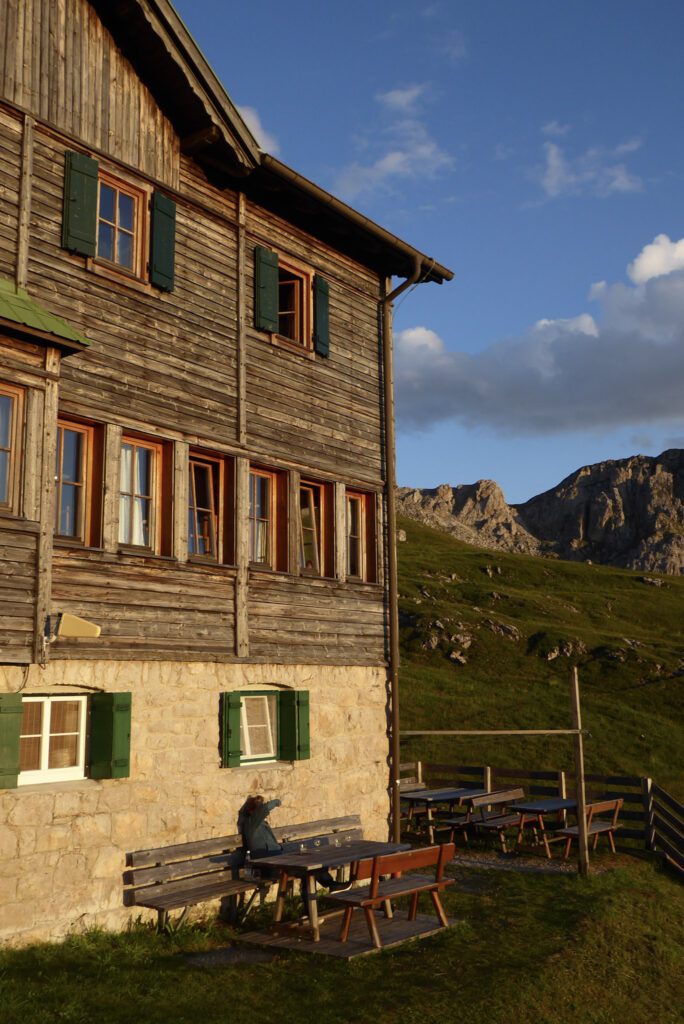
How to Book a Rifugio in the Dolomites
Looking for step-by-step help?
Booking a rifugio can feel intimidating, but it doesn’t have to be. Here are your options:
1. Book Directly
Many rifugi have their own websites with contact forms or email addresses. You’ll often need to email or call (sometimes in Italian). Be sure to confirm if meals are included.
2. Use a Platform
Websites like Bookatrekking.com allow you to reserve multiple huts at once, especially for Alta Via routes. This option is convenient for non-Italian speakers.
3. Tourist Offices or CAI Membership
Local tourism boards may assist with bookings, and CAI (Italian Alpine Club) members often get discounts.
When to book a rifugio:
Popular rifugi like Lagazuoi, Nuvolau, and Locatelli can fill up as early as January for peak dates, so don’t wait!
Summer season: June through September (some huts open earlier or close later depending on snow conditions)
Book 3–6 months in advance for popular routes like AV1 and AV2
Where?
Deciding where to stay depends on your planned route.
It’s a good idea to spread out a map and plan thoroughly. If you’re trekking the AV1 or AV2, it’s wise to research which Rifugios meet your requirements.
That’s why I opted for a booking agency to handle my accommodations. Bookatrekking is a solid option; they offer budget-friendly choices that cater to your needs, and their customer service is commendable.
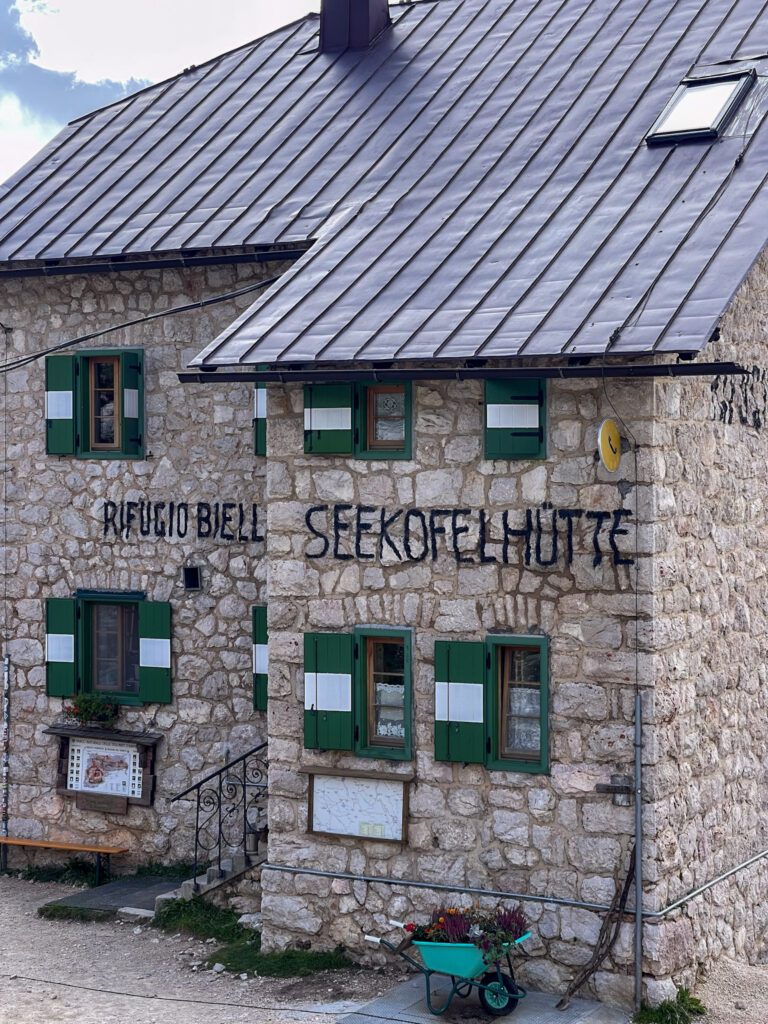
What to Expect While Staying at a Rifugio in the Dolomites
Embarking on a hut-to-hut hike in the Dolomites is more than just a trek—it’s an immersion into alpine culture. Rifugi offer a unique blend of camaraderie, rustic charm, and breathtaking vistas. Here’s what you can anticipate during your stay:
Sleeping Arrangements
Rifugi typically provide shared dormitory-style rooms with bunk beds, though some offer private rooms for a premium.
Linens aren’t always provided, so bringing a lightweight sleeping bag liner is advisable.
I remember my first night at Rifugio Genova, where I hung my microfiber towel at the end of the bunk bed, creating a cozy little curtain for added privacy. It felt like my own little nook amidst the shared space.
This was something I repeated throughout my time on the trails in the Dolomites (ask your bunkmate if this is cool, most of the time no one else was above me)
There are typically three types of room options in rifugi:
| Room Type | Description | Price Range (per person, half-board) |
|---|---|---|
| Dormitory | Large shared room with multiple bunk beds, often co-ed. Bring earplugs! | €45–65 |
| Shared Room | Smaller shared rooms with 4–6 people. Sometimes single-gender. | €55–75 |
| Private Room | Private double or triple room with shared or private bathroom. Book early! | €70–100+ |
Notes:
- Half-board usually includes dinner and breakfast.
- Bring cash, as many refugios do not accept credit cards.
- Prices can vary depending on the rifugio’s location, altitude, and amenities.
Booking early increases your chances of scoring a private room.
These go fast—especially on popular routes like the Alta Via 1 and 2.
Dormitory-Style Rooms
Be prepared for shared accommodations with bunk beds, where privacy comes at a premium.
Accommodations range from cozy 4-bed rooms to more communal spaces with 6 or even 24 beds.
Given the compact nature of these areas, it’s important to maintain a clean personal space and ensure the aisles remain clear for easy passage.
I can’t tell you how many times I saw bare butts on my journey. I remember turning the corner at one refuge and I was greeted by an old man standing in his underwear, bare belly in all his wonderful glory.
He greeted me with an enthusiastic “CIAO!” My husband jokes with me about this:
” You finally got to spend the night with an Italian man“
If you are the least bit modest, you can change in the bathrooms. I know some cultures are vastly different from others, and that’s okay. There’s space for you too!
Private Rooms
Some Rifugi offer the option to book entire rooms, not just beds, which can lead to a significant cost difference.
Opting for just a bed can be more economical at times.
Prices for these accommodations can vary, and they go up in price, considering you are paying for a whole room vs just a bed in a dormitory.
You might be looking at €70 to 80. This is with half board. Trust me, after seeing the bare-bellied man in his underwear, I went downstairs to look it up.
My Experience
The communal rooms weren’t so bad. To be honest with you, I was tired half the time anyway, and I just wanted to sleep. I think everyone felt the same way as well.
At Rifugio Perderu, I encountered some very noisy bunkmates who kept everyone up. It was the only bad experience I had.
Rifugio Firenze was a big room with 30 beds, It was a lot and kind of overstimulating.
By far my favorite hut was Rifugio Scotoni. The character, the facilities were so great. I loved the chef, who kept all of us entertained and the food was delicious!
Bathroom Facilities
Ensuite Bathrooms
Rifugio Scotoni had en-suite bathrooms for a few of their dormitory-style rooms. Therefore, the bathroom experience varies significantly.
Coin Showers
At certain Rifugios, such as Rifugio Genova/Schlüterhütte, you need to buy a special coin for the showers.
Specifically, you can get this coin at the bar for around 3 euros. Furthermore, the showers are located on the second floor, and there’s a specific slot in the payment box for your coin.
As soon as you activate the shower, your time starts ticking, and you have about 2-3 minutes of hot water before it runs out. Consequently, this often leads to some funny exchanges and camaraderie in the hallway, as everyone roots for one another to beat the clock!
Rifugio Firenze added your shower total at the end of your stay.
At Rifugio Pederu, the showers are modern with frosted glass, which may not offer much privacy. For those who are more private, it’s worth noting that you might be on display. But rest assured, it’s a common setup, and generally, no one pays any mind.
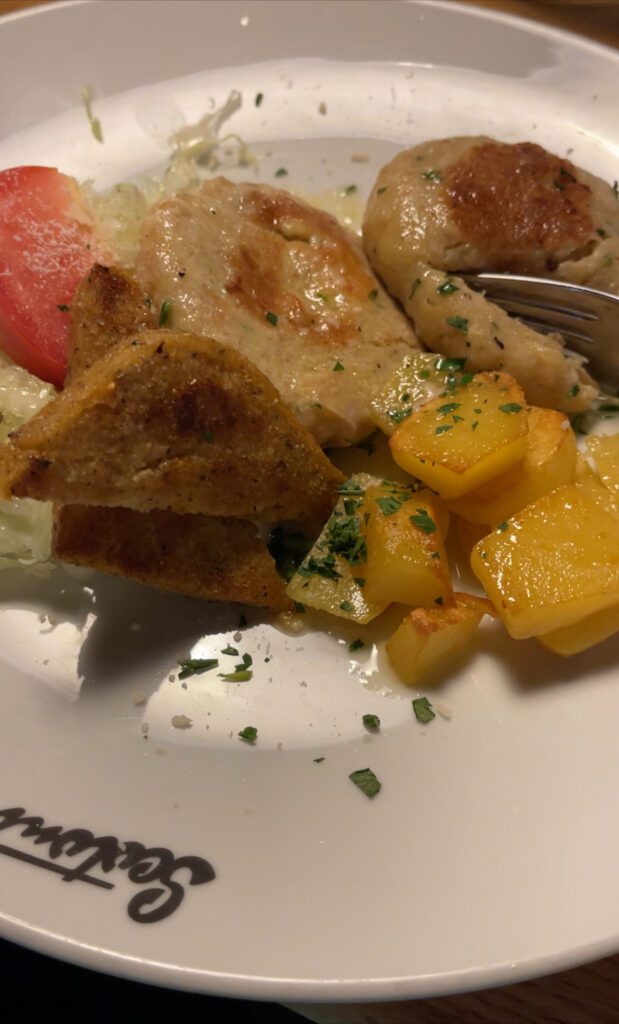
Food at the Rifugios
Here’s a breakdown of what’s commonly offered at rifugi:
| Option | Includes | Notes |
| Half-Board | Dinner and breakfast | Most common option; vegetarian often available |
| Bed & Breakfast | Breakfast only | Usually bread, jam, butter, coffee or tea |
| Full Board | Breakfast, lunch (or packed), and dinner | Rare; ask in advance |
| Sauna Access | Sauna or spa area access (where available) | Only a few rifugi offer this—Lagazuoi is famous for it! |
Most hikers opt for half-board because it’s convenient and filling after a long day on the trail. Be sure to inform the hut of any dietary restrictions ahead of time.
Meals at rifugi are hearty and communal. Expect dishes like polenta, pasta, and local stews. Breakfasts are usually simple—think bread, jam, and coffee.
Sharing meals with fellow hikers often leads to delightful conversations and new friendships. One evening, I enjoyed a meal at Rifugio Scotoni, where the warmth of the food matched the hospitality of the hosts.
One of my favorite aspects of staying in a Rifugio was the food, which was a delightful fusion of traditional, robust South Tyrolean fare and Italian cuisine. It was truly magnificent to savor after a day spent hiking.
Meals
- Breakfast is served from 0700-0900am
- Dinner is served from 1830-2100
Traditional Food
- You’ll find things like South Tyrol Dumplings, Tris Di Canederli, Polenta, Pasta, and of course, Apfelstrudel. One of my favorite meals I had was at Rifugio Genova/ Schlüterhütte, Delicious South Tyrolian Speck Dumplings with Mushrooms.
- Breakfast is your usual European-style layout with cold cuts, bread, hard-boiled eggs, jams, and sweets. Yogurt is also a big option with muesli and granola.
Gluten Free
- I noticed that many Rifugios have gluten-free options, and you can even email the Rifugio to see what they have or what precautions they take. I always advise folks to send a message first!
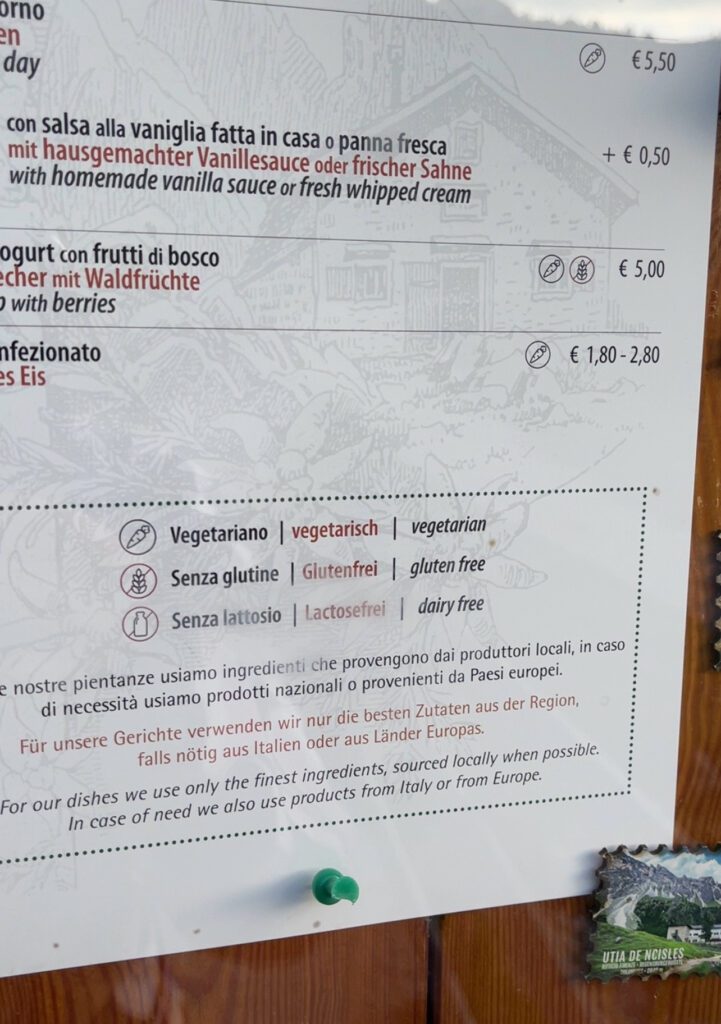
- Packed Lunches: The cost of a packed lunch for the following day can range from €5 to €10. For instance, at Rifugio Pederu, they prepared a packed lunch for my next day’s journey. It contained an apple, a croissant, and two delightful small sandwiches with ham, pickle, and cheese. I collected it after breakfast, but it’s advisable to inform them the night before, if you desire a packed lunch.

What to Pack for Your Rifugio Stay
When packing for a hut-to-hut hike, it’s crucial to keep your load light due to the considerable distance you’ll be trekking. Here are some essentials that you’ll want to pack.
Passport
I’ve encountered several Rifugios who have asked me for my passport. If you have a hotel on the front or backend, you’ll probably need this anyway!
Cash
Some rifugios don’t accept cards. Make sure you have coins and bills as well. For both my Alta Via hikes, I made sure to at least have €150.00 in cash.
Earplugs
Dormitory-style rooms mean shared space. Some rifugios had these for sale, I can’t remember what specific ones. It’s just best to bring it with you.
Snacks
I made it a point to pack snacks for my hike because the breakfasts never really filled me up. Granola bars and beef jerky worked as a great addition to the packed lunch.
Not sure what to bring for a multi-day trek in the Dolomites? Check out my complete Alta Via 1 & 2 Packing List for Solo Female Hikers. I break down everything I carried (and what I wish I hadn’t), plus a free checklist!
Sleeping Bag Liner & Pillowcase
Many rifugios require you to carry your own linens, primarily for hygiene purposes. Some rifuges offer sheet rentals for a fee of €4-5. To make it easier on staff, just bring your own.
Shower Shoes
Make sure you have a pair of lightweight shoes on you to switch into at the hut or in the shower. I used my Keen sandals, lightweight and easy to pack.
Microfiber Towel
This came in handy for me, I highly suggest bringing one. I always let it air dry by hanging it on the end of the bunk bed and it created a little curtain for me while sleeping (ask your bunkmates if this is okay)
Headlamp
Useful for navigating at night but also for a nightlight while in the room. My first night on the AV2, my bunkmates woke up at 0430am and had to navigate the room.
Toiletries
Essentials like shampoo, dry shampoo, toothpaste, deodorant, and body wash. Some Rifugi had soap that you could dispense.
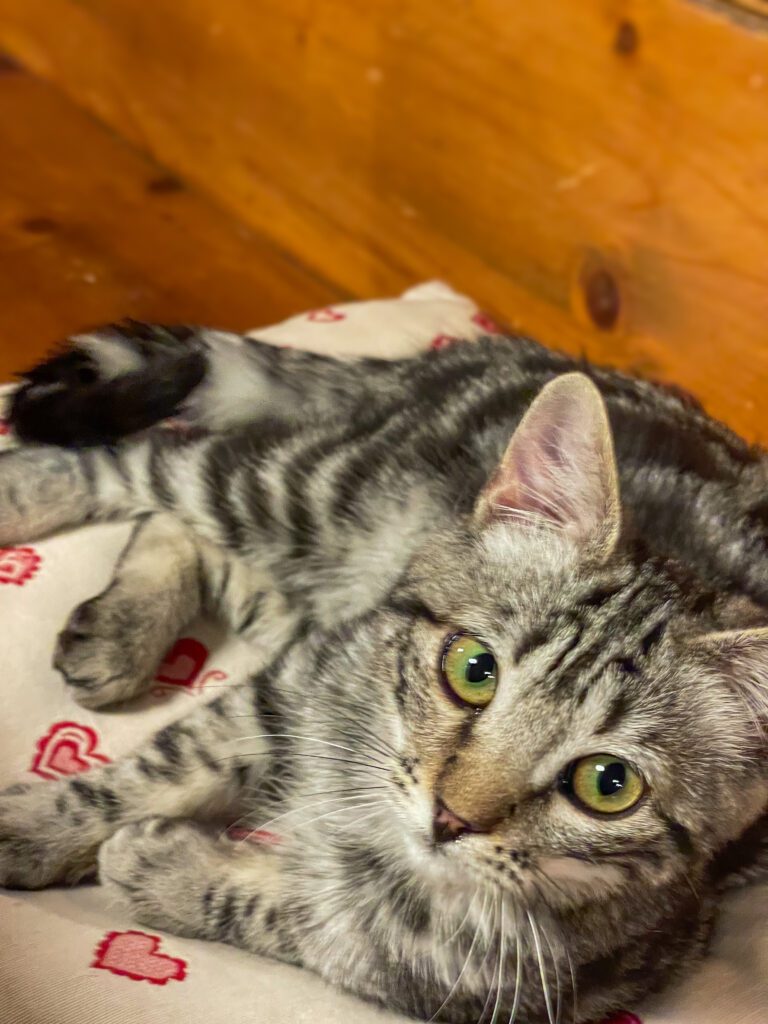
Etiquette and Respect at Rifugios
- Quiet Hours: “Hüttenruhe” is a German term meaning quiet time or lights out. This period begins at 10 pm, and it’s important to be considerate. During a stay at a rifugio, I experienced two guests who disregarded the 10 pm rule, keeping our dorm awake late into the night, which was quite disruptive.
- Opening Windows: It can get downright hot in the rooms, especially when there are 8-24 people in a tiny space. As a courtesy, ask all your roommates if it is okay to open the windows to let air in.
- Checking in: Arrive at your Rifugio slightly before 6 pm. If you have a signal, call ahead if you anticipate being late. This way, they won’t give your room to someone else who needs accommodation. Rest assured, rifugios won’t turn you away; they will accommodate you if you need shelter.
- Something I like to add to this is, the earlier you get there the faster you’ll get your bunk assignment. I always opt for a bottom bunk so I try to get to the hut early. Raise your hand if you are terrified of falling off a bunk in the middle of the night.
- You always check in at the bar and then go from there.
- Remove Your Boots: You will often find designated areas on the ground floor or in the basement for storing your boots. Additionally, slippers are provided for your use. Furthermore, some huts are equipped with boot warmers to keep your footwear warm while they hang up – it’s a pleasant touch! Notably, Rifugio Scotoni and Pederu offer this amenity.
Best Rifugi in the Dolomites (My Favorites)
These are the rifugi that stole my heart:
- Rifugio Lagazuoi – Iconic views and a sauna at 2,752 meters
- Rifugio Scoiattoli – Views of the Cinque Torri rock formations
- Rifugio Averau – Delicious food and friendly hosts
- Rifugio Fanes – Surrounded by nature with a peaceful vibe
Each one has its personality, and many are dog-friendly!
Why Do Rifugi Have So Many Different Names? (And How to Decode Them)
If you’ve started planning your Dolomites hike, you might be wondering why the same rifugio seems to go by two or even three completely different names. This naming system reflects the incredible cultural and linguistic diversity of the region.
The Dolomites stretch across northern Italy, overlapping regions that speak Italian, German, and Ladin—a Romance language native to these valleys. As a result, many rifugi have multiple names depending on the local community and signage:
| Rifugio Name (Italian) | German Name | Ladin Name |
| Rifugio Firenze | Regensburgerhütte | Utia de Ncisles |
| Rifugio Genova | Schlüterhütte | — |
| Rifugio Locatelli | Dreizinnenhütte | — |
| Rifugio Lago di Braies | Pragser Wildsee Hütte | — |
| Rifugio Puez | Puezhütte | Ütia de Puez |
| Rifugio Lagazuoi | — | — |
Quick tips for dealing with multiple names:
- Italian names are most common on maps and in booking platforms.
- German names appear frequently in South Tyrol and Alto Adige.
- Ladin names may be seen on local signage in areas like Trentino or Val Badia.
It’s one of the many things that makes this area so unique and layered with history. If you listen closely, you might even hear locals speaking Ladin while sipping espresso at the hut!
Yes—some rifugi are accessible via cable car or short walks from parking areas. This makes them great for families, older travelers, or anyone wanting a mountain experience without the trek.
How Rifugi Compare to Mountain Huts in Other Countries
If you’ve stayed in mountain huts in places like Switzerland, Austria, or the U.S., you’ll notice that Dolomites rifugi have their own unique rhythm and traditions. Here’s how they compare:
| Country | Meal Style | Booking Style | Sleeping Setup | Vibe / Culture |
| Italy | Communal, set menu | Direct or via Bookatrekking | Dorms + limited private rooms | Warm, rustic, deeply rooted in Alpine tradition |
| Switzerland | À la carte or half-board | Online portals + SAC | Dorms mostly, few private | More expensive, very clean and orderly |
| Austria | Full board often available | Alpine Club memberships | Dorms + shared rooms | Efficient, structured, often lively |
| USA | Self-catered or basic meals | Public land permits or online | Rustic bunkhouses or tents | More DIY, especially in national parks |
Rifugi in the Dolomites stand out for their hospitality, affordability, and strong community feel. Don’t be surprised if you end up sharing wine and stories with fellow hikers at dinner — it’s part of the magic.
- Season: Most rifugi open from late June to late September
- Cash: Bring euros—many huts don’t take cards
- Charging Devices: Limited plugs; bring a power bank
- Languages: Italian and German are common; some staff speak English
- Solo Friendly? Absolutely! I’ve done it and felt safe and welcomed every time
Staying in a rifugio is about more than just a bed for the night—it’s about soaking in the beauty of the Dolomites, forging new friendships, and connecting with the rhythm of the mountains. Whether you’re a first-timer or a seasoned trekker, I hope this guide helps you feel ready and excited to experience it all.
FAQ About Staying in a Rifugio
Do rifugi have Wi-Fi?
Some do, especially the more modern or popular ones. But don’t count on it! Take it as a chance to unplug.
Can I bring my dog?
Many rifugi are dog-friendly, but always check ahead and bring your own pet bedding.
What if I don’t speak Italian?
Basic English is usually understood, especially at popular huts, but learning a few phrases in Italian or German helps a lot.
Do I need to bring food?
Meals are included if you book half-board. Bring trail snacks for during the day.
Is a sleeping bag required?
Usually not, but a sleeping bag liner is a must. Blankets and pillows are provided.
Do rifugi provide towels or toiletries?
No, you’ll need to bring your own towel, soap, and toiletries. Some rifugi sell small essentials, but come prepared.
Are rifugi safe for solo female travelers?
Yes! I’ve stayed in multiple rifugi as a solo female hiker and always felt safe. Stick to popular trails, arrive before dark, and trust your instincts.
Can you stay in a rifugio in winter?
Most rifugi are only open in summer (June to September), but a few stay open in winter for snowshoeing or ski touring. Always check ahead.
Can I do a rifugio stay without hiking long distances?
Absolutely. Some rifugi are reachable by cable car or a short walk, making them perfect for day trips or relaxed overnights.
Do rifugi serve vegetarian or gluten-free meals?
Yes, most do—but always notify them in advance when you book. Options may be limited in remote huts.
Can I charge my phone at a rifugio?
Sometimes. Charging outlets are limited and not guaranteed. Bring a power bank or solar charger.
📌 Save This Guide on Pinterest
Love this post? Save it to your Dolomites or hiking trip planning board so you can come back to it later!
Have questions? Drop them in the comments—or DM me on Instagram @kimberlykepharttravels. I’d love to help you plan your trip!
👉 Ready to start planning your own mountain adventure? Don’t miss my detailed guide on How to Book a Rifugio in the Dolomites — it’s packed with step-by-step instructions, sample email templates, and tips to make booking a breeze!
🎒 Planning a longer trek like the Alta Via 1 or 2? Make sure to check out my Alta Via Packing Guide — it’s everything I learned and packed from my own hut-to-hut adventure across the Dolomites.
Check out my other Dolomites Blog Posts
- Discover the Best Apps for Exploring the Dolomites
- Five of the Best Hikes in the Italian Dolomites You Can Do Near Cortina D’ Ampezzo
- Solo Hiking the Stunning Alta Via 1 & 2 with Bookatrekking
- Ultimate First-timers Guide to The Dolomites
- The Best Hotels In The Dolomites
- Your Ultimate Guide to Bolzano and Merano Christmas Markets
- Rango Christmas Market in Garda-Trentino Italy
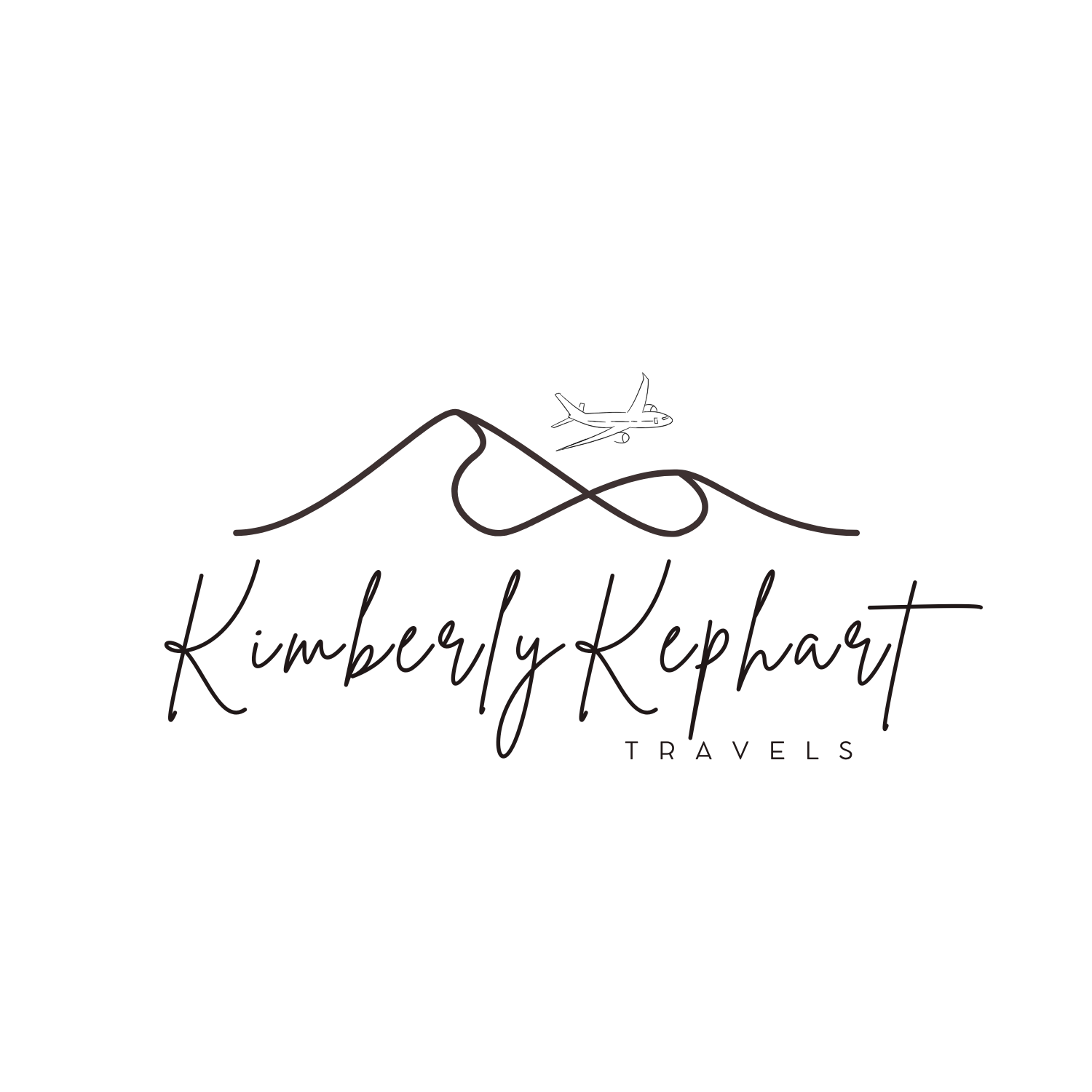
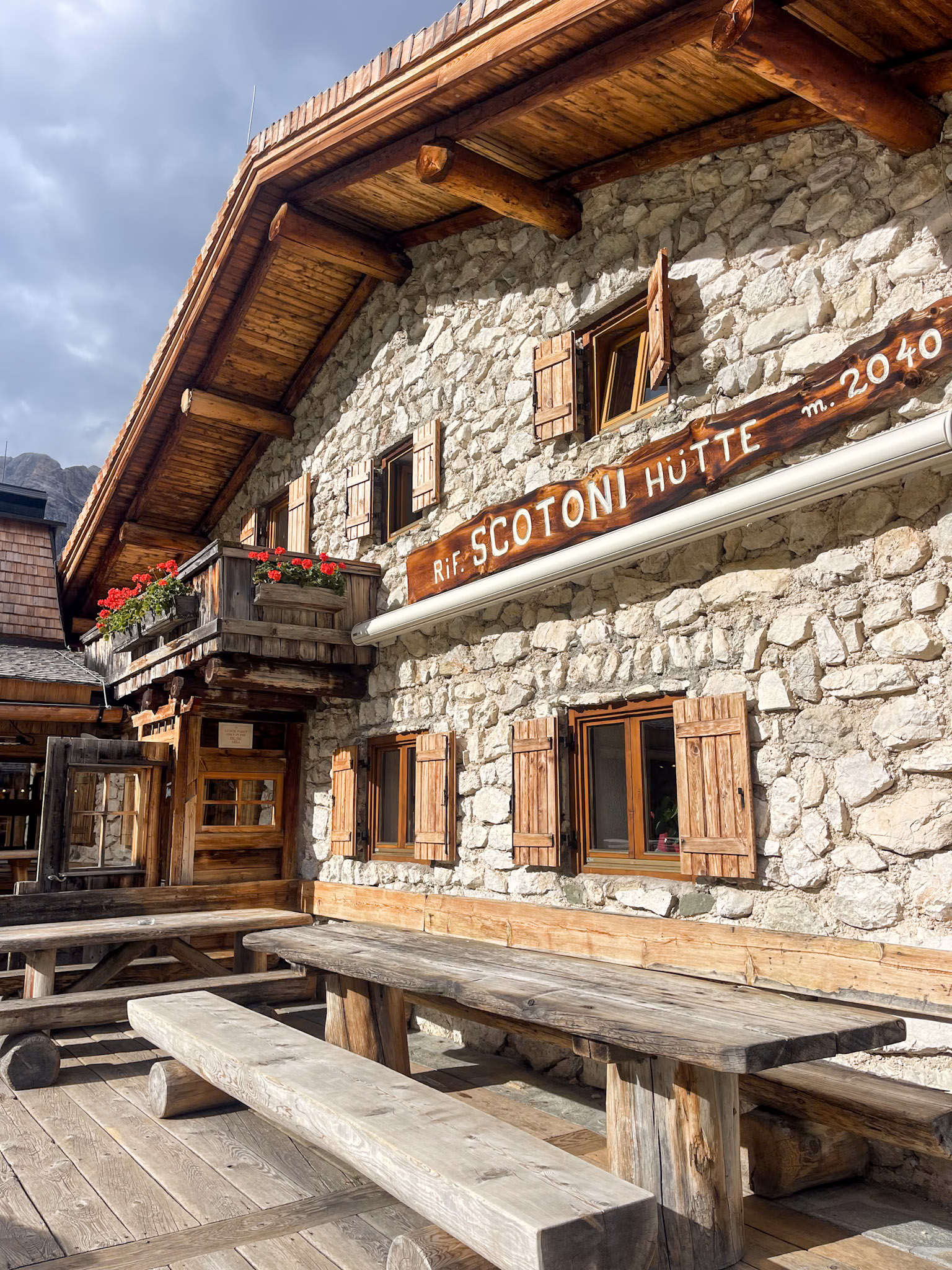
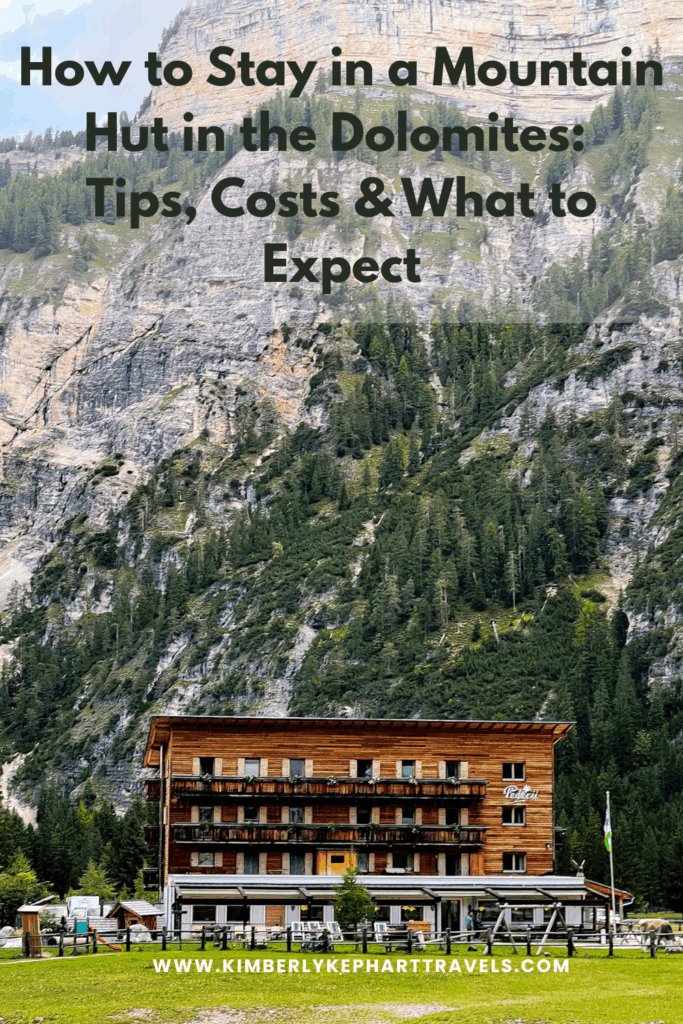
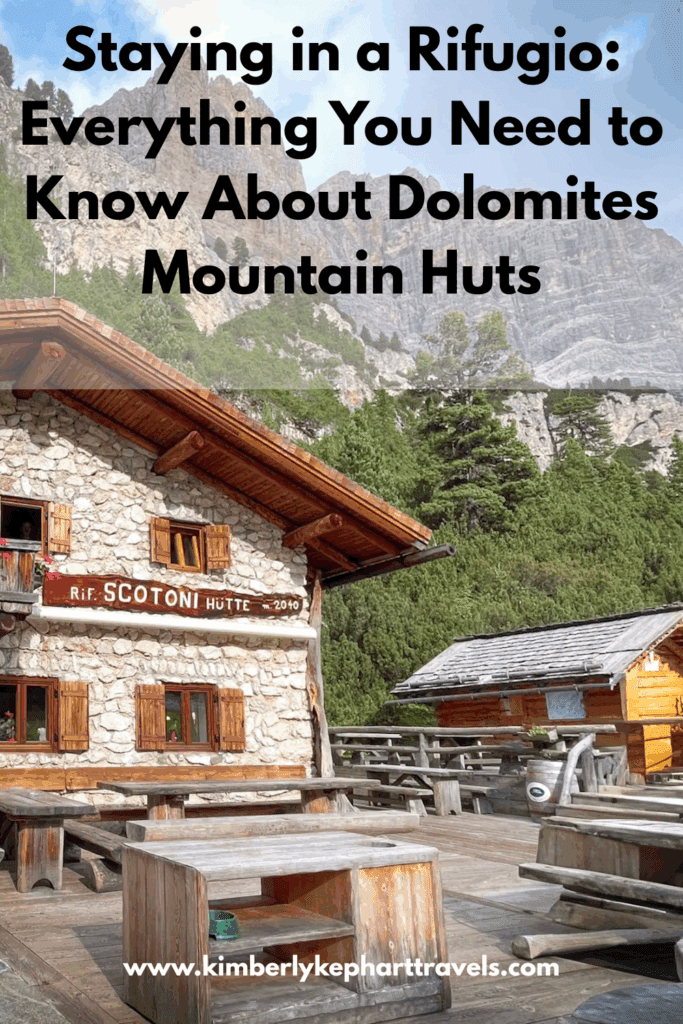
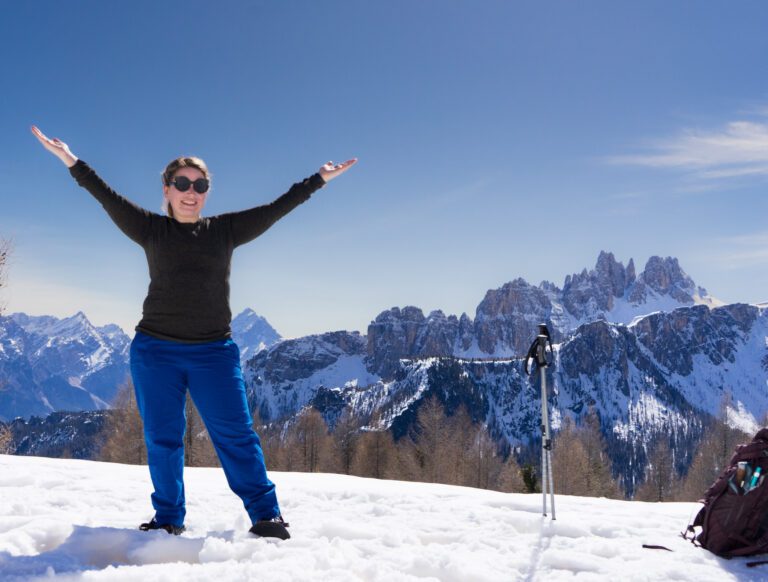
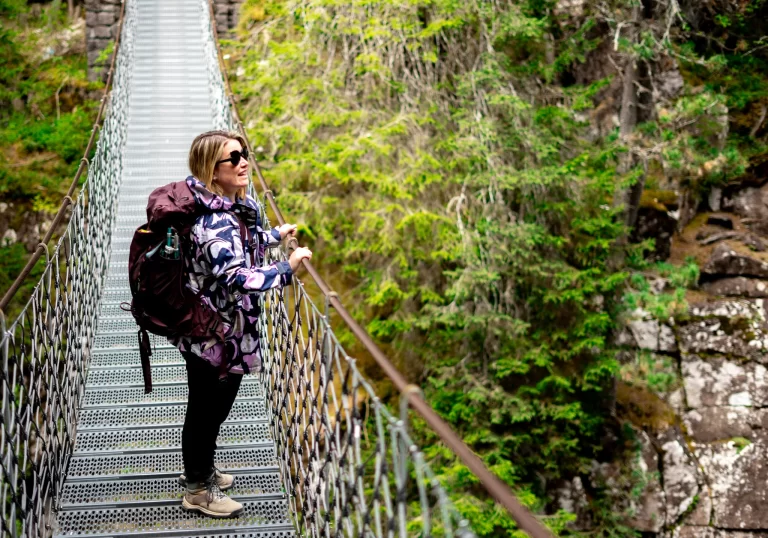
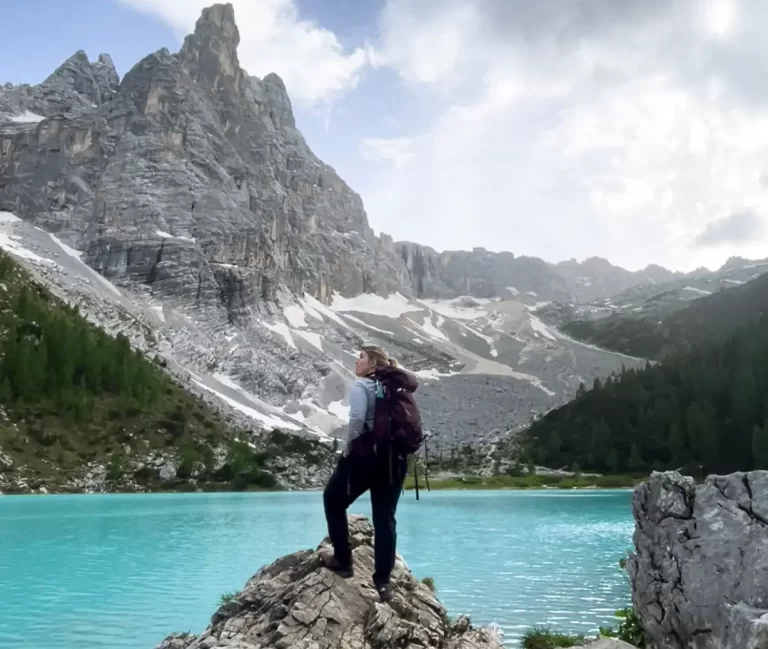
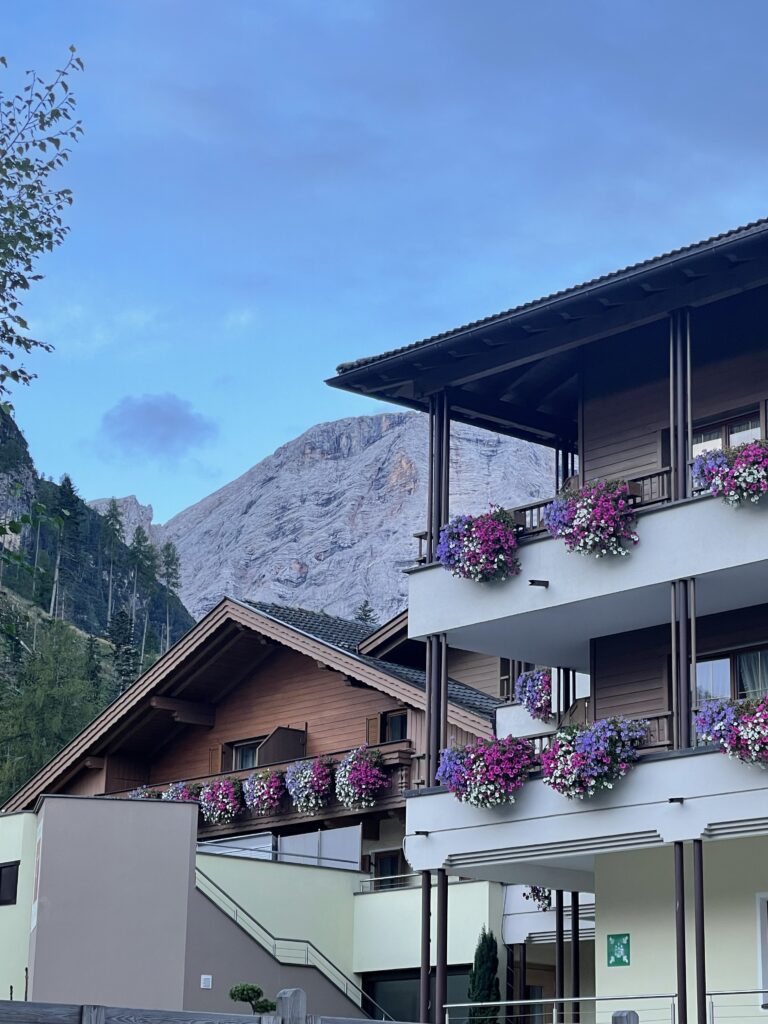
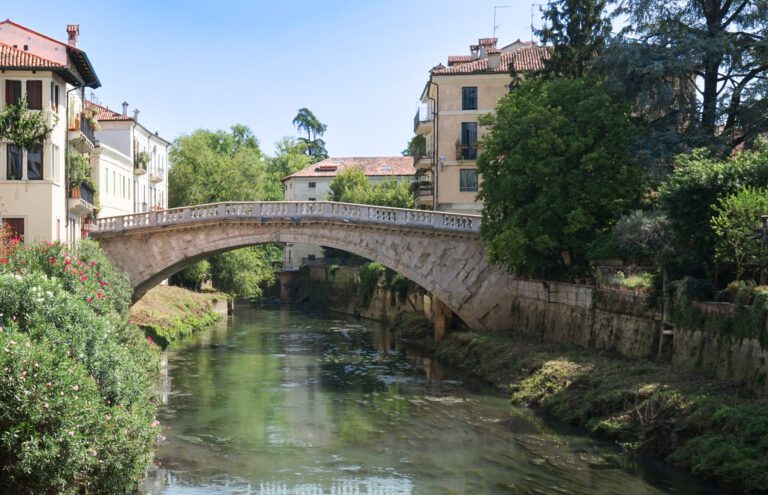
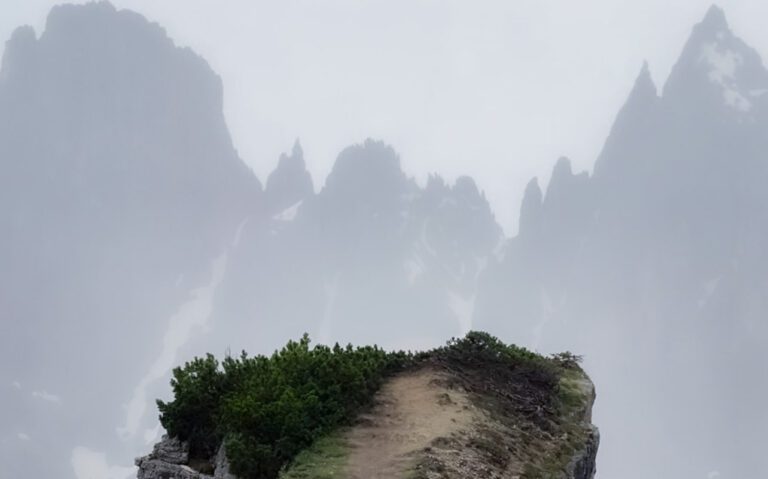
Hey! Thanks for creating this! I’m a bit nervous about my first stay at a Rifugio next year but I think after reading this I’ll be set!